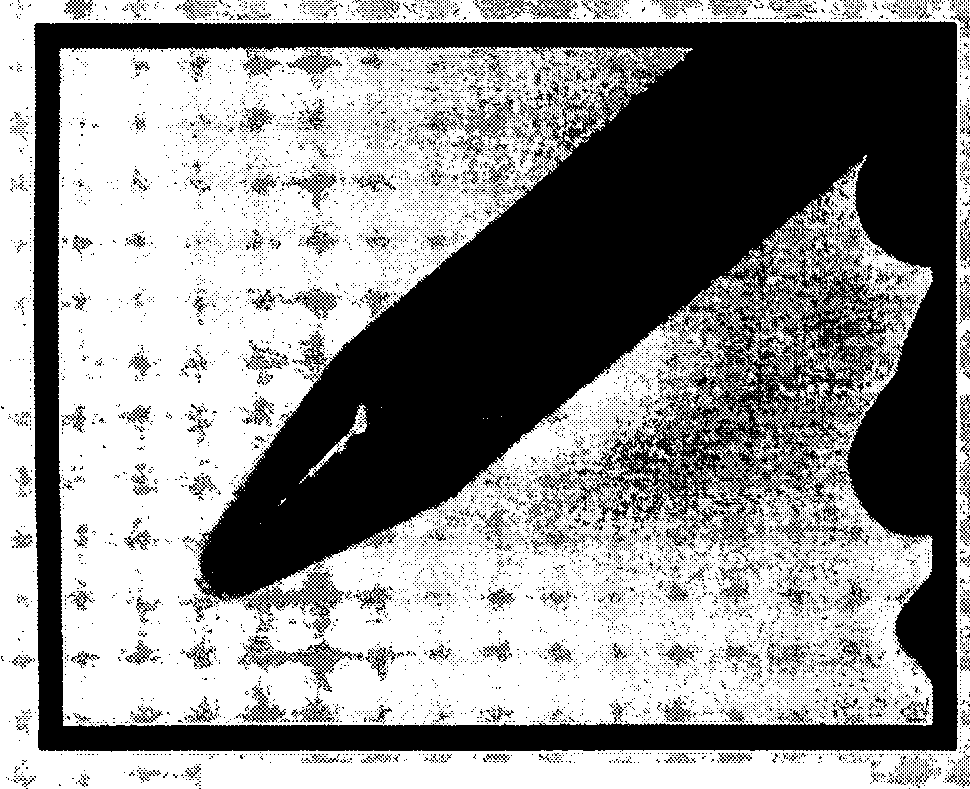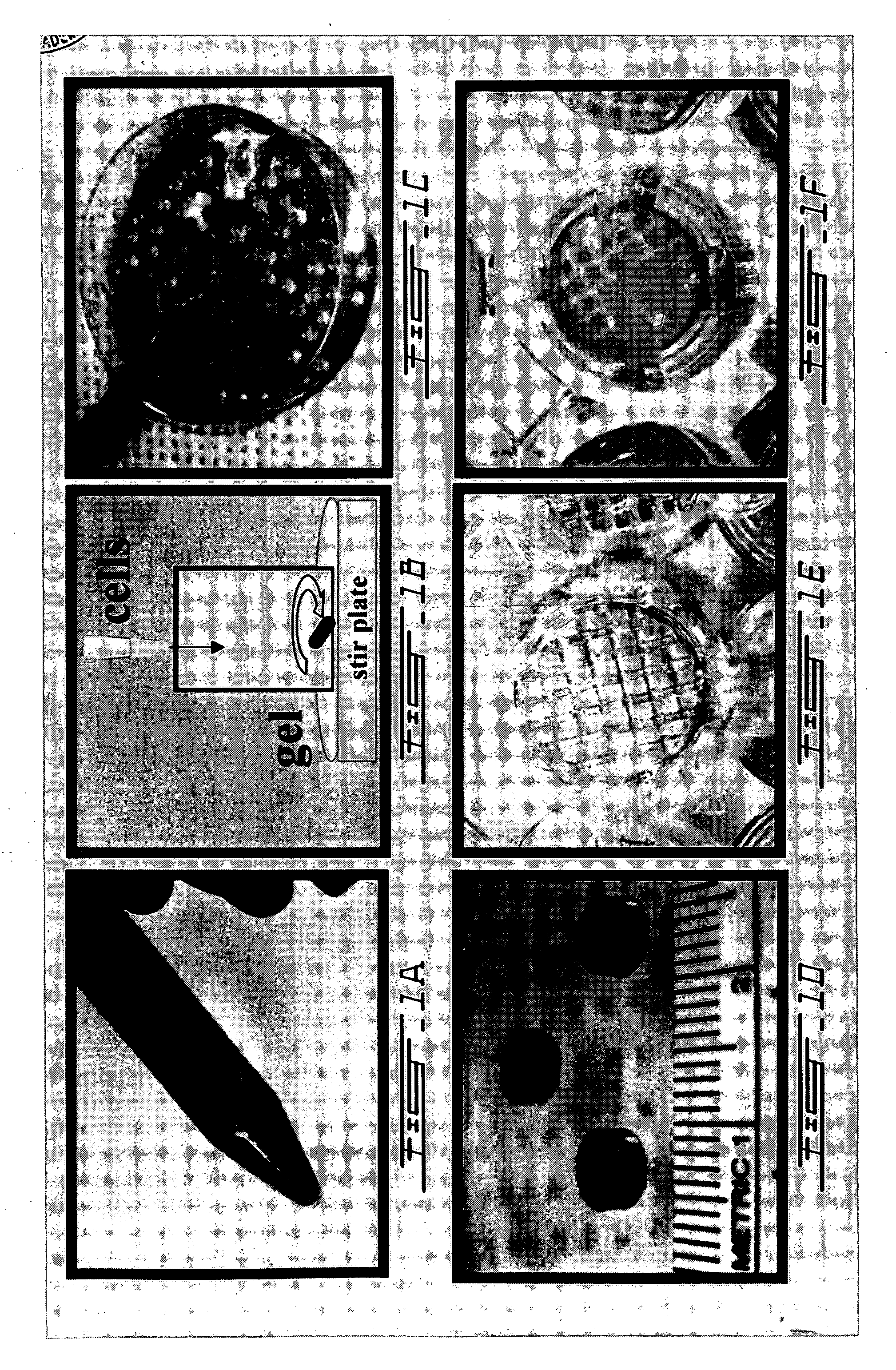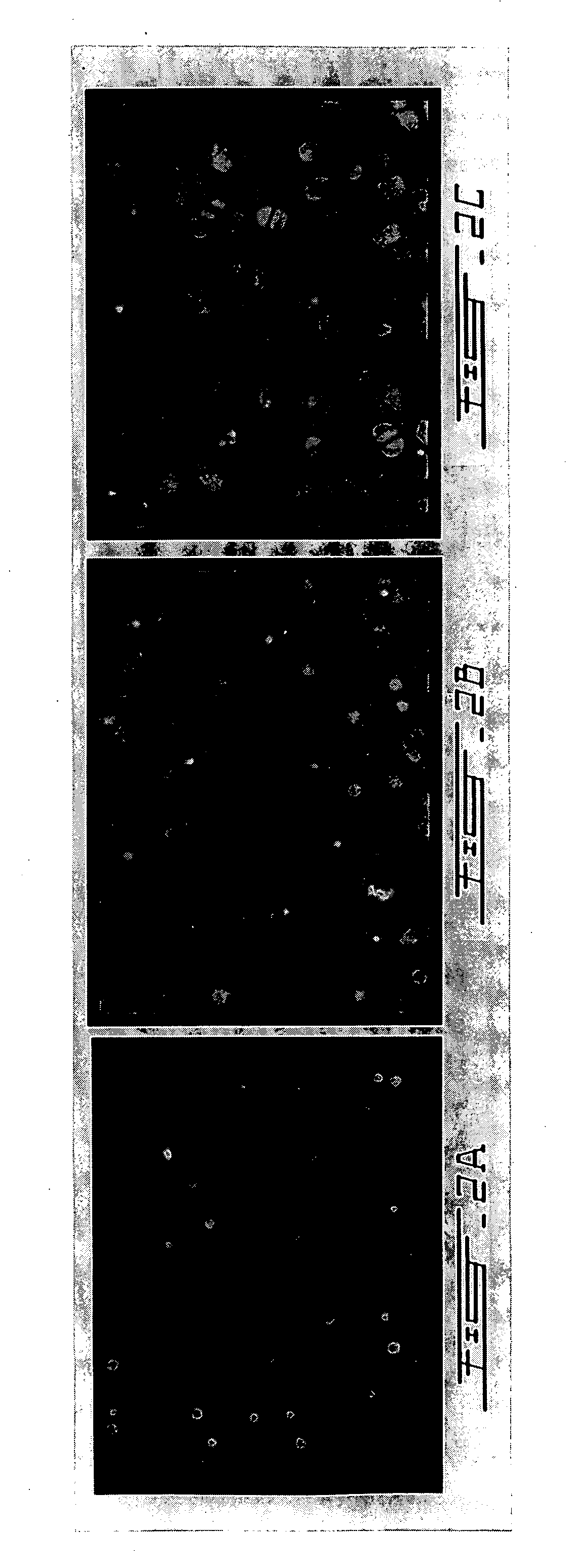Composition and method for the repair and regeneration of cartilage and other tissues
a technology applied in the field of cartilage and other tissues, to achieve the effect of improving coagulation/solidification
- Summary
- Abstract
- Description
- Claims
- Application Information
AI Technical Summary
Benefits of technology
Problems solved by technology
Method used
Image
Examples
example 1
Mixing of Thermogelling Chitosan Solution with Primary Chondrocytes for In Vitro Growth of Cartilage
[0079] Chitosan (0.22 g, 85% deacetylated) as an HCl salt powder was sterilized by exposure to ultraviolet radiation in a biological laminar flow hood and then dissolved in 7.5 ml H2O resulting in a pH near 5.0. D(+)-glucosamine (0.215 g, MW 215.6) was dissolved in 10 ml of 0.1M NaOH and filter sterilized using a 22 μm pore size disk filter. Glycerol phosphate (0.8 g, MW 297 including 4.5 mole water per mole glycerol phosphate) was dissolved in 2.0 ml of H2O and filter sterilized using a 22 μm pore size disk filter. 2.25 ml of the glucosamine solution was added drop-by-drop under sterile conditions to the chitosan solution with agitation at a temperature of 4° C. Then 1 ml of the glycerol phosphate solution was added under the same conditions. This final solution is still a liquid and remains so for an extended period (i.e. days) if the temperature is kept low, i.e. near 4° C. The pH...
example 2
Mixing of Thermogelling Chitosan Solution with Primary Chondrocytes and Subcutaneous Injection for In Vivo Growth of Cartilage
[0087] To demonstrate that this in situ gelling system can be employed in animals, athymic mice (CD1 nu / nu) were subjected to dorsal, subcutaneous injections of 100 to 300 μl of chitosan gel described in Example 1, containing 10 million calf articular chondrocytes per ml (FIG. 7). A cell pellet of primary calf chondrocytes was admixed with liquid chitosan gel at 4° C. to achieve a concentration of 1 to 2×107 cells / ml, and injected in liquid form as 100 μl subcutaneous dorsal implants in anesthetized nude mice. In situ gelling was apparent by palpation 5 to 10 minutes post-injection.
[0088] Control mice were similarly injected with chitosan gel alone. A palpable gel was formed within 10 minutes of injection. Implants were recovered at 21, 48, and 63 days post-injection. Toluidine blue staining revealed the gross production of GAG-rich extracellular matrix by ...
example 3
Adhesion of Thermogelling Chitosan Solution to Cartilage and Bone Surfaces
[0093] One of the most significant advantages of this chitosan thermogelling formulation for cartilage repair is its ability to conform and adhere to irregular cartilage defects and other irregularly shaped cavities in the body that require tissue repair, regeneration, reconstruction or bulking. Many current tissue repair procedures suffer drastically in this respect. Chitosan-glycerol phosphate liquid gel without cells was delivered ex vivo to porcine femoral condylar intra-chondral (not involving bone) defects. Disc-shaped defects in the articular cartilage were created using a biopsy punch (FIG. 12A) and the chitosan solution described in Example 1 was injected into these defects and allowed to solidify in an incubator at 37° C. The articulating cartilage surface was opposed and simulated joint motions were performed after which the gel was observed to remain in the cartilage defect (FIG. 12B). The gel not...
PUM
| Property | Measurement | Unit |
|---|---|---|
| molecular weight | aaaaa | aaaaa |
| pore size | aaaaa | aaaaa |
| temperature | aaaaa | aaaaa |
Abstract
Description
Claims
Application Information
 Login to View More
Login to View More - R&D
- Intellectual Property
- Life Sciences
- Materials
- Tech Scout
- Unparalleled Data Quality
- Higher Quality Content
- 60% Fewer Hallucinations
Browse by: Latest US Patents, China's latest patents, Technical Efficacy Thesaurus, Application Domain, Technology Topic, Popular Technical Reports.
© 2025 PatSnap. All rights reserved.Legal|Privacy policy|Modern Slavery Act Transparency Statement|Sitemap|About US| Contact US: help@patsnap.com



